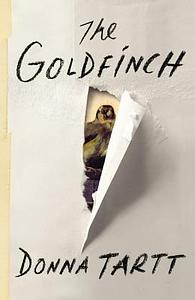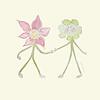Take a photo of a barcode or cover
dark
emotional
funny
hopeful
inspiring
reflective
sad
tense
slow-paced
Plot or Character Driven:
Character
Strong character development:
Yes
Loveable characters:
Yes
Diverse cast of characters:
Yes
Flaws of characters a main focus:
Yes
For such a wonderful, uplifting message to come from a book steeped in the elements of a tragedy was wildly unexpected to me. The ending sealed my five-star rating.
Donna Tartt knows how to write stories that make you feel as if you are standing right next to the character in the world of the book. Having read The Secret History, I was expecting no satisfying resolution, but instead I got something lovely. That's the best thing I can think of to say about this one. Certainly a keeper <3
Donna Tartt knows how to write stories that make you feel as if you are standing right next to the character in the world of the book. Having read The Secret History, I was expecting no satisfying resolution, but instead I got something lovely. That's the best thing I can think of to say about this one. Certainly a keeper <3
The universe of Theo and the path through his adolescence and maturity resonates with me. Donna Tartt is a brilliant writer that uses the most poetic metaphors, which lets you feel in love with people who are not flawless and rather imperfect.
This book is depressing. But not in a cathartic, productive way, like Murakami's [b:Norwegian Wood|11297|Norwegian Wood|Haruki Murakami|https://i.gr-assets.com/images/S/compressed.photo.goodreads.com/books/1386924361l/11297._SY75_.jpg|2956680]. Only in a voyeuristic way.
I really wanted to like this book. The writing style is compelling. The characters are interesting. But you spend over 700 pages watching the protagonist make self-destructive decisions that also hurt other people and I straight up didn't have a good time.
I really wanted to like this book. The writing style is compelling. The characters are interesting. But you spend over 700 pages watching the protagonist make self-destructive decisions that also hurt other people and I straight up didn't have a good time.
emotional
sad
slow-paced
Plot or Character Driven:
Character
Strong character development:
Yes
Loveable characters:
Complicated
Diverse cast of characters:
N/A
Flaws of characters a main focus:
Yes
DNF- so boring (also slightly homophobic and misogynistic. weird behavior)
It was 771 pages, and yet it was not enough. I actually did have tears in my eyes in the final few pages. (which is a very rare thing). I also feel very sad and hungover from it. Read this at the same time with my mom and we talked about it during. An unforgettable reading experience for me, and it will remain a treasure, always. I am now officially a fan of Donna Tartt.
adventurous
challenging
sad
medium-paced
Plot or Character Driven:
Plot
Strong character development:
Complicated
Loveable characters:
Complicated
Diverse cast of characters:
No
Flaws of characters a main focus:
Yes
challenging
dark
emotional
hopeful
inspiring
reflective
sad
tense
slow-paced
Plot or Character Driven:
Character
Strong character development:
Yes
Loveable characters:
Complicated
Diverse cast of characters:
N/A
Flaws of characters a main focus:
Yes




